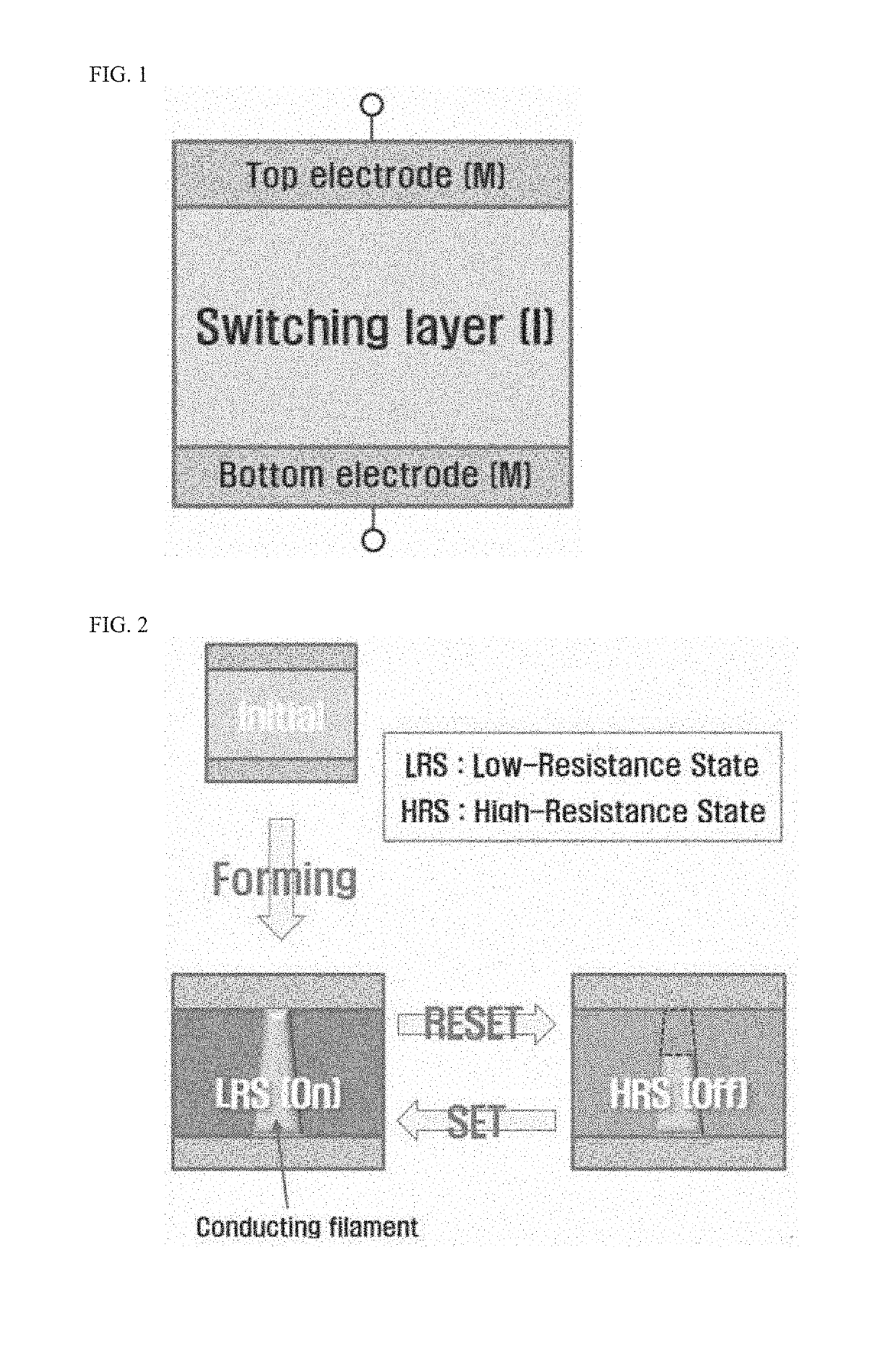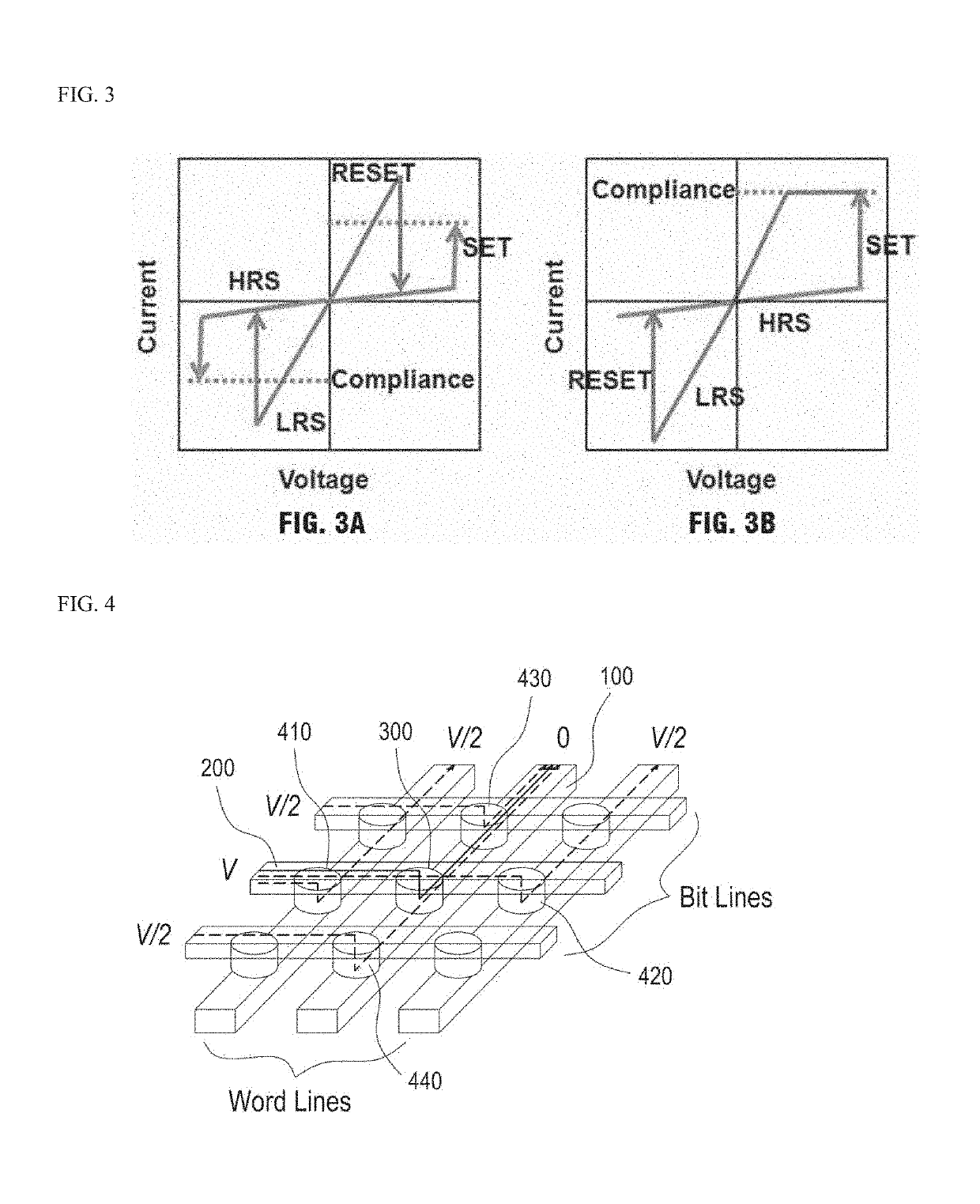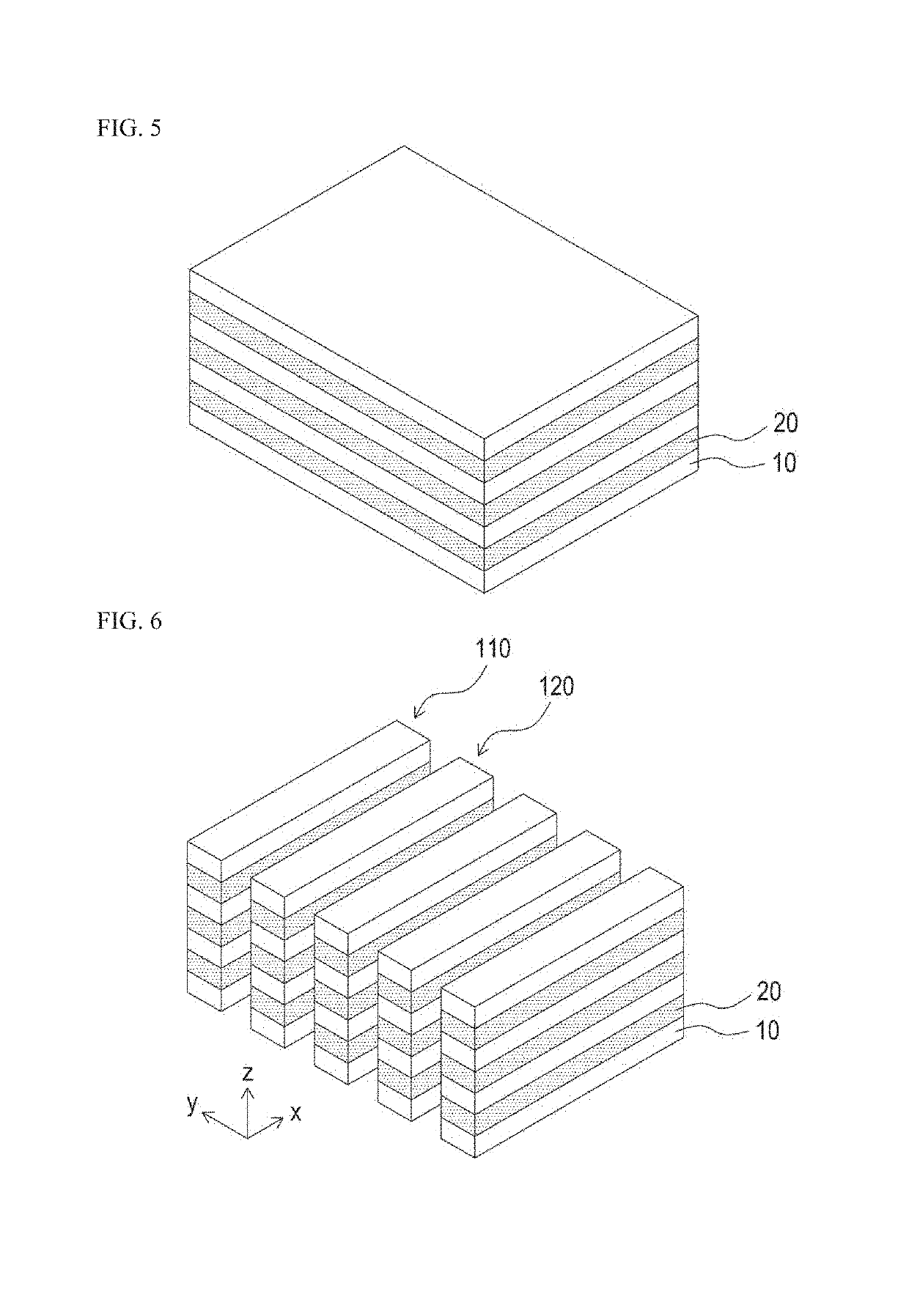Resistive random access memory device for 3D stack and memory array using the same and fabrication method thereof
- Summary
- Abstract
- Description
- Claims
- Application Information
AI Technical Summary
Benefits of technology
Problems solved by technology
Method used
Image
Examples
Embodiment Construction
[0033]Detailed descriptions of preferred embodiments of the present invention are provided below with accompanying drawings.
[0034]First, referring to FIG. 10 and FIG. 17, a resistive memory device of the present invention will be described.
[0035]A resistive memory device according to the present invention comprises, as commonly shown in FIGS. 10 and 17, a bottom electrode 21 or 24 formed by doping impurities into a semiconductor material; a resistance change layer 30 or 50 formed on the bottom electrode; and a top electrode 40 formed on the resistance change layer, wherein the bottom electrode 21 or 24 has one or more electric field concentration regions A, B, C and D, or E toward the resistance change layer 30 or 50.
[0036]Here, the semiconductor material forming the bottom electrode 21 or 24 may be any material as long as it can be made conductive by doping with impurities. However, materials such as a semiconductor material used in making circuit elements as well as the memory dev...
PUM
 Login to View More
Login to View More Abstract
Description
Claims
Application Information
 Login to View More
Login to View More - R&D
- Intellectual Property
- Life Sciences
- Materials
- Tech Scout
- Unparalleled Data Quality
- Higher Quality Content
- 60% Fewer Hallucinations
Browse by: Latest US Patents, China's latest patents, Technical Efficacy Thesaurus, Application Domain, Technology Topic, Popular Technical Reports.
© 2025 PatSnap. All rights reserved.Legal|Privacy policy|Modern Slavery Act Transparency Statement|Sitemap|About US| Contact US: help@patsnap.com



